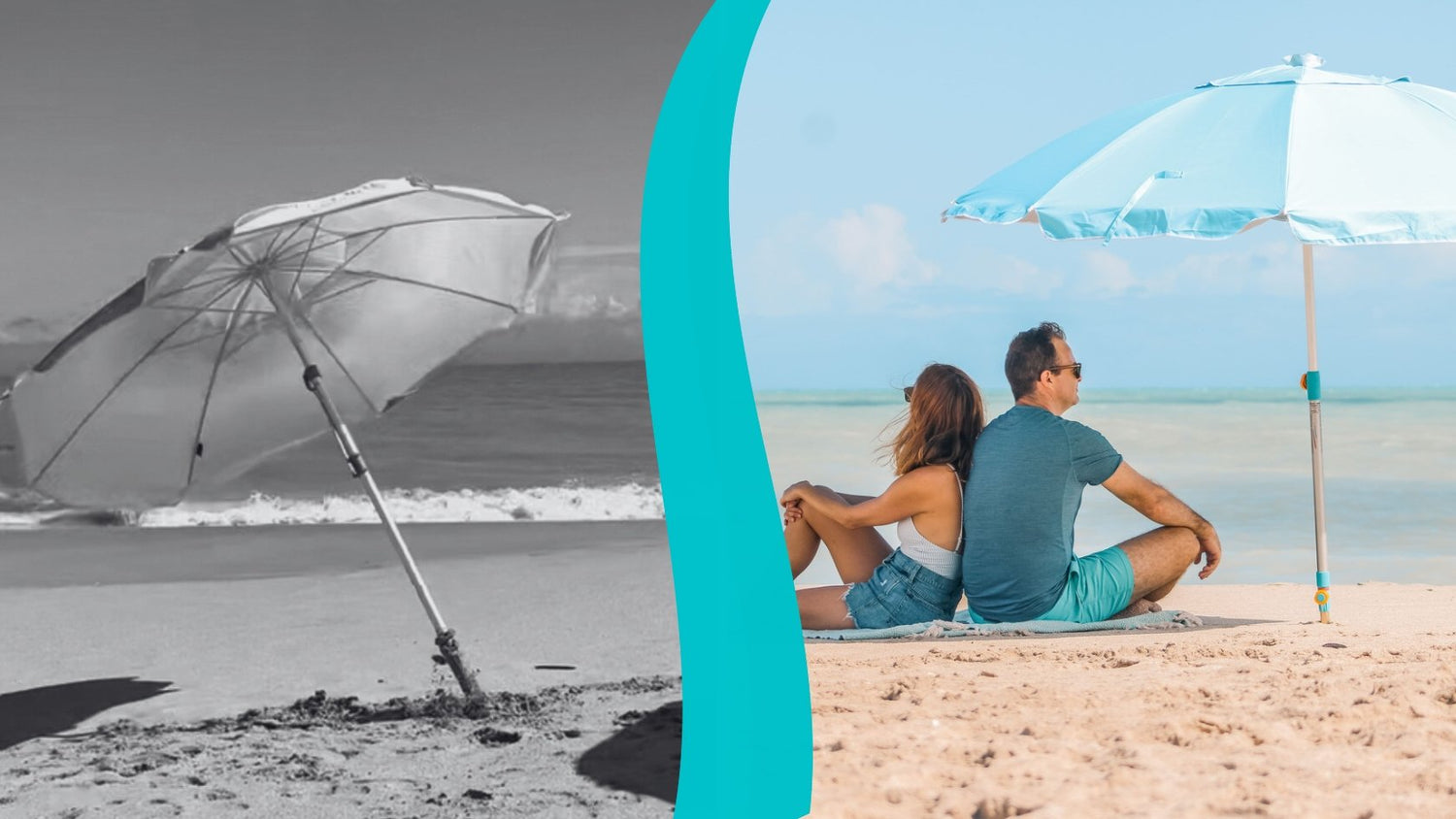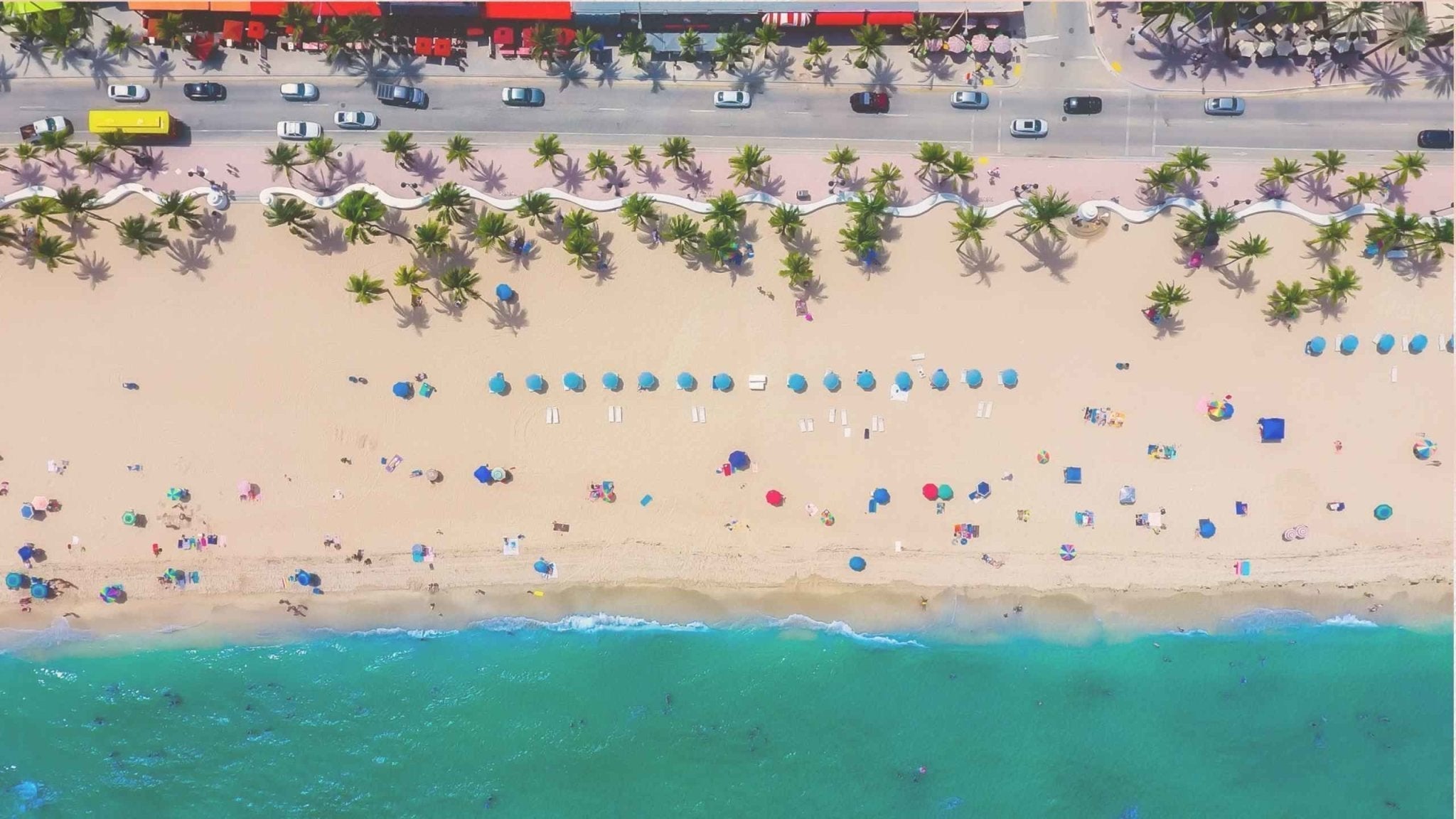Why airborne umbrellas matter
Runaway umbrellas happen when wind lifts an umbrella out of the sand. The canopy catches a gust, the pole loosens or snaps, and the umbrella tumbles down the beach—a real hazard. The U.S. CPSC has reported thousands of beach-umbrella injuries in recent years, ranging from cuts and bruises to fractures and, in rare cases, fatalities. (Safety alert: https://www.cpsc.gov/Safety-Education/Safety-Guides/Outdoors/Beware-Airborne-Beach-Umbrellas-Can-Kill)
30-second takeaway
- Anchor depth + design are what keep shade planted (not just the canopy).
- Choose a deep-setting, hammer-in sand anchor you can seat in seconds.
- Angle into the wind, tighten joints, and lower the umbrella in strong or shifting gusts.
- Look for independent testing to ASTM F3681-24 (the current beach-umbrella/anchor safety standard).
- The Handy Beach Anchor: sets in ~10 seconds, grips in any sand, fits most 1.1" (28 mm) poles. (Product page: https://handybeachgoods.com/products/beach-anchor)
What’s changed: there’s now a safety standard
In one line: ASTM F3681-24 gives a common benchmark for wind safety on sand-mounted beach umbrellas and anchors.
ASTM International published F3681-24 as a consumer safety specification for beach umbrella/anchor systems. It establishes performance requirements so umbrellas and anchors remain secure in sand under defined wind conditions. (Standard overview: https://www.astm.org/f3681-24.html)
CPSC safety alert (May 2024)
CPSC’s safety alert explains the new standard to consumers. Labels for compliant anchors will indicate resistance of at least 75 lb or remaining secure in winds up to 30 mph when installed as instructed. Always follow the manufacturer’s setup directions and close the canopy if conditions change. (Safety alert PDF: https://www.cpsc.gov/s3fs-public/SafetyAlert_3000_BeachUmbrellas_052024.pdf)
Lawmakers pushed for safer beaches
Bipartisan calls for action helped accelerate this work—e.g., U.S. Senators highlighted ~2,800 ER-treated injuries linked to beach umbrellas and urged stronger safety measures years before publication of F3681-24. (Background: https://www.warner.senate.gov/public/index.cfm/2019/7/warner-kaine-urge-aggressive-action-to-protect-beachgoers-from-dangers-of-flying-beach-umbrellas)
Securing a beach umbrella (the essentials)
In one line: Set it deep, point it into the wind, secure every joint, and lower when conditions change.
- Seat the base deeply and keep the pole vertical.
- Angle the canopy into the wind so gusts spill rather than lift.
- Tighten all joints/locks; re-check mid-day.
- Lower/close the umbrella when winds strengthen or shift.
- Follow the manufacturer’s instructions every time.
- Want a one-page reminder? See our Simple Wind Safety Guide
- Local rules can affect what shade is allowed during peak season. For example, Myrtle Beach allows umbrellas only (≤7.5 ft diameter) from Memorial Day to Labor Day; large canopies/tents are restricted in that period. (City guidance: https://www.cityofmyrtlebeach.com/i_want_to/learn_about/tents_and_umbrellas.php)
Anchor options (pros, cons, and when to use them)
Screw / auger / spiral add-ons
In one line: Light and cheap, but often too short for dry sugar sand.
Pros: Affordable, easy to pack.
Cons: Short depth; can slip/spin in dry sugar sand; plastic parts may crack; slower twist-in setup.
Best for: Small canopies in firmer/packed sand and light breeze.
Sandbag bases
In one line: Stable when filled well—slower and messier to set up.
Pros: Added mass can hold better than short augers; some systems are independently tested.
Cons: Dig/fill/empty each use; extra parts to carry; bulky when wet; some beaches restrict bulky/tethered setups on crowded days (check local rules, e.g., Myrtle Beach peak-season umbrella rules above).
Best for: All-day camps when you don’t mind extra steps.
Integrated deep-set anchors (hammer-in)
In one line: Deep bite + fast setup = most reliable and quickest setup across changing sand.
Pros: Purpose-built depth and grip; ~10-second setup; fewer loose parts; works in dry sugar sand and compacted areas.
Cons: Heavier than plastic add-ons; confirm pole compatibility.
Best for: Real coastal wind and set-and-forget shade.
Why we recommend the Handy Beach Anchor
In one line: Deep, fast, independently tested—built for real beaches, not just brochures.
Deep, secure set—fast
The Handy Beach Anchor combines the base pole and anchor in one piece. It sets in about 10 seconds—no twisting, no digging—then holds firm once seated deep in the sand.
Independently tested
Independently wind-tested to ASTM F3681-24 guidance for beach umbrellas and anchor devices—so confidence isn’t based on guesswork. (About the standard: https://www.astm.org/f3681-24.html)
Built for real beaches
A non-corrosive steel nose grips dry sugar sand and penetrates compacted or pebbly patches where short augers struggle. All-metal construction prioritizes strength and longevity.
Compatible with your umbrella
Designed as a base pole for standard canopies with a 1.1" (28 mm) pole diameter. Slide in your canopy pole, tighten the knob, done. Prefer an all-in-one? See our Handy Beach Umbrella & Anchor System (https://handybeachgoods.com/products/silver-peach-beach-umbrella-anchor-system)
At-a-glance: wind-safe setup checklist (screenshot this)
✅ Deep-setting, hammer-in sand anchor (not twist-only)
✅ Tool-free, ~10-second setup you’ll actually do right
✅ Works in dry sugar sand and compacted areas
✅ All-metal durability (no flimsy plastic)
✅ Independently tested to ASTM F3681-24 guidance
✅ Fits 1.1" (28 mm) umbrella poles
✅ Angle into the wind; tighten joints; lower in gusts
Shop the Handy Beach Anchor
Real stories behind the standard
Safety advocates like Ed Quigley—seriously injured by an airborne umbrella in 2015—have pushed for better awareness and standards for years. Learn more at BeachUmbrellaSafety.org (https://www.beachumbrellasafety.org/) and his media coverage. (Example: Inside Edition blog post: https://www.beachumbrellasafety.org/blog/ed-quigley-interviewed-on-inside-edition )
FAQs (quick answers)
What’s the best beach umbrella anchor for wind?
A deep-setting, hammer-in sand anchor you can seat in seconds and that’s independently tested to ASTM F3681-24. Depth + fast, foolproof setup beat twist-only augers—especially on dry sugar sand.
Auger/spiral vs. hammer-in: which holds better in dry sand?
Augers are short and can slip/spin in dry sugar sand. A hammer-in, deep-set anchor bites deeper and holds more consistently across changing conditions.
Are sandbag bases more reliable than anchors?
A well-designed sandbag base can be very stable (some systems are independently tested), but they’re slower, messier, and add parts to carry. A hammer-in anchor offers comparable hold with faster, simpler setup—no sandbags to manage.
Will the Handy Beach Anchor fit my umbrella?
Most likely. It fits standard umbrella canopies with a 1.1" (28 mm) pole diameter. If unsure, measure across the outside of your pole.
Final takeaway
Short augers are convenient, sandbags can work but are fussy, and deep-set hammer-in anchors are the most reliable across real beach conditions. The Handy Beach Anchor hits the checklist: fast setup, deep hold, durable materials, compatibility, and independent ASTM-aligned testing—so you can relax and keep your shade where it belongs. (Shop: https://handybeachgoods.com/products/beach-anchor)
Safety note
No shade system is truly windproof. Always follow the manufacturer’s instructions, and lower or close the umbrella in strong or shifting winds. CPSC beach-umbrella safety alert: https://www.cpsc.gov/Safety-Education/Safety-Guides/Outdoors/Beware-Airborne-Beach-Umbrellas-Can-Kill
About the author
Written by Agnes, co-founder of Handy Beach Goods and a Florida mom of two. After one too many runaway umbrellas, she set out to design anchors and umbrellas that actually stay put—engineered for real coastal wind and made to last.


